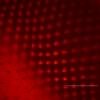Description
Splicing was analyzed in the transcriptome of aging Drosophila melanogaster photoreceptors and eyes using RNA-seq. This dataset contains the original microscopy images (tif files), summaries of qPCR, phototaxis and luciferase assay data (csv files) used to generate the figures presented in Stegeman et al. 2018. It also contains R scripts used for analysis, plasmid map and sequence information for the Rh1-ffluc construct, and detailed protocol files for phototaxis assays, optical neutralization and luciferase assays. JunctionSeq plots for splicing analysis in photoreceptors and eyes are provided as zipped files that contain html files of all differentially-spliced genes. These plots show each splicing event (eg exon skipping/inclusion) normalized to overall gene expression using several different approaches (eg counts, normalized transcript levels).
Cite this work
Researchers should cite this work as follows:
- Stegeman, R. L.; Hall, H.; Escobedo, S.; Chang, H.; Weake, V. M. (2018). Proper splicing contributes to visual function in the aging Drosophila eye - Supporting data for Stegeman et al. (2018). Purdue University Research Repository. doi:10.4231/R7ZG6QGD
Tags
Notes
File Information:
Confocal microscopy images (.tif) can be opened using ImageJ or similar software.
qPCR data summary, phototaxis data and luciferase data are provided as .csv files.
Plasmid maps are provided in Gene Bank format as .txt files.
All scripts used for analysis are provided as .R files and can be opened using RStudio or similar software.
The zipped folders containing JunctionSeq plots for eye or photoreceptors are quite large. The entire folder must be downloaded to properly read the html files, which can be opened using any standard browser (eg Internet Explorer, Firefox). You can scroll through differentially spliced genes using the arrows on these html files.
